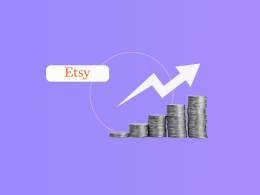While most business owners have a general understanding of how economics works, many don’t think about using it in their daily operations. However, one area of economics that can be quite beneficial for companies regardless of their industry is unit economics.
Unlike typical economics, which focuses on various variables throughout the marketplace, unit economics focuses on analyzing a company’s performance and forecasting future growth on a per-unit level.
Let’s dive a little further into unit economics and explore the impact it can have on an organization.
Contents:
2. Establishing a company’s unit
3. Defining the unit economics of a unit
4. What does unit economics help a company measure?
5. Why should a business consider using unit economics?
Unit economics overview
On the surface level, unit economics predicts business profitability by looking at a single unit. The actual unit that the organization measures will vary from company to company but ultimately provides the same crucial information.
By looking at a single unit, business owners can break down the costs and revenues associated with producing and selling one unit. It becomes possible to forecast revenue and costs for a quarter or even a year.
Of course, even though unit economics is a great way to predict future growth, other variable factors, like material costs, must also be considered when forecasting.
Establishing a company’s unit
For your company to fully take advantage of unit economics, you’ll need to decide what your “unit” will be. For some companies that fall into merchandising or manufacturing, a unit is often defined as a customer or simply one product purchaser.
For instance, if you own a jewelry store, your unit would be the customer who purchases a watch or a ring. Similarly, if your company offers a service like home cleaning or you run a subscription company, then a single user of the service would be your unit.
Defining the unit economics of a unit
Depending on how you’re classifying a unit in your business, you’ll need to account for several types of metrics and different ways you’ll need to calculate your unit economics. First, let’s look at a company offering service and counting a unit as one user.
User as a unit
For companies like internet providers and subscription services, there are two fundamental metrics you need to determine.
The first is the overall cost of acquiring one user, which helps paint a picture of the amount of money your company spends to attract a new customer. The second metric is the revenue a single user will generate over their time with a company — this is often referred to as the Customer Lifetime Value.
With these two metrics, you can calculate your business unit economics by using the “One Item Sold” Model.
Active purchasers as a unit
If your company sells multiple items or has a large catalog of products, then your fundamental unit economics will be different than that of a service company.
For example, when it comes to revenue, instead of looking at the customer lifetime value, you’ll need to consider the revenue generated by every active purchaser throughout a month.
Since the way you classify a unit is different for businesses with products, you’ll need to use a model other than the “One Item Sold” to calculate your unit economics. The “One Customer” Model is often the best option for product-based companies.
What does unit economics help a company measure?
At a high level, unit economics will help a company measure the profitability of a unit. However, as you make calculations to determine your unit economics, you’ll notice that the models also include other crucial financial metrics.
For example, you’ll need to calculate the lifespan of your customer and the marketing costs over a specific period to determine your unit economics. While important to the formula, these numbers also provide valuable insight into other areas of your company.
Here are some of the other measurements you’ll gain insight into when modeling unit economics:
- Gross margin
- Quarterly and annual revenue per customer
- Marketing and sales costs associated with acquiring a new customer
- The lifecycle of a customer
- Customer growth potential over the lifetime of a product or service
Why should a business consider using unit economics?
Business owners should use multiple methods and models, like unit economics, when forecasting and making important decisions.
Unit economics is a great tool that provides crucial information and can be a vital asset for short- and long-term financial planning. For instance, using unit economics in your company can:
- Make it easier for leadership to calculate important metrics such as contribution margins and break-even points
- Simplify the data in financial models to make them easier to understand
- Help management optimize products and predict future profitability
- Assist in analyzing return on investment and other profitability tests
Overall, the valuable information you gain on both cost and revenue when calculating your company’s unit economics can help your leadership team make informed decisions and assist in reaching your organization’s growth goals.



![Business Proposal Template: Steps to Write a Good Business Proposal [Free Templates]](https://synder.com/blog/wp-content/uploads/sites/5/2023/08/business-proposal-template-260x195.png)



.png)
